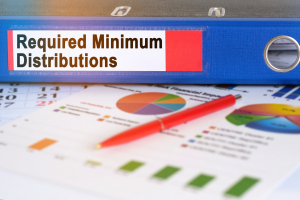As president at New Century Planning in Freehold, New Jersey, and a financial strategist with The Society of Financial Awareness, Robert M. Ryerson draws on extensive experience with retirement plans and strategies. Robert M. Ryerson has published in Forbes magazine on the topic of required minimum distributions and is currently co-authoring a book on the same subject.
Many retirement plans, including traditional IRAs and all employer-sponsored plans, specify a point in time after which the account holder must start taking withdrawals. Usually, this point is set at when the account holder retires or reaches the age of 70.5 years, whichever occurs later.
 The amount that the account holder must withdraw is known as the required minimum distribution, or RMD. The amount depends on a life expectancy number that the IRS calculates, in combination with the account holder’s marital status and how that status affects the account. If the account holder withdraws less than the RMD, the IRS will tax the difference at 50 percent.
The amount that the account holder must withdraw is known as the required minimum distribution, or RMD. The amount depends on a life expectancy number that the IRS calculates, in combination with the account holder’s marital status and how that status affects the account. If the account holder withdraws less than the RMD, the IRS will tax the difference at 50 percent.
Account holders often don’t worry about RMD amounts because they believe that they will be in a lower tax bracket upon retirement. This may be true, although many retirees are surprised to find themselves in the same or even a higher tax bracket due to complex provisional income rules. For these individuals, converting to a Roth IRA or other non-tax deferred account may be a wise move.
The way RMD rules apply to a taxpayer depends completely on his or her personal profile and retirement plan choices. A consultation with a tax or financial professional can provide important clarification.

